OpenAI has submitted an open letter to the United States Office of Science and Technology Policy (OSTP), which includes recommendations and strategies to preserve America’s leadership in artificial intelligence.
The letter by the ChatGPT developer that has transformed competition in generative AI also highlighted what it said was a growing threat posed by China’s ambition to dominate global AI by 2030.
Named “OpenAI’s proposals for the U.S. AI Action Plan,” the letter addresses issues including uncoordinated state-level regulations, copyright challenges and infrastructure needs.
It also emphasized the importance of protecting AI systems developed under democratic values from those created by authoritarian states.
The breakthrough algorithms of China’s DeepSeek, which have redefined costs in AI, prompted OpenAI to urge immediate action. DeepSeek and the resources provided to other Chinese technology giants, such as infrastructure and dataset support, alarm U.S. AI companies within the context of plans by Beijing to take over the AI leadership by 2030.
‘Democratic’ AI
OpenAI’s recommendations are spearheaded by need for innovation-supportive regulations. The company warns that inconsistent state-level regulations in the U.S. could stifle innovation and calls for adopting a unified national framework.
Another key focus is the concept of “Democratic AI.” After dismissing the European Union’s ethical AI proposal last month, U.S. companies are now seeking alliances.
The U.S. and the U.K. refused to sign a declaration on “inclusive and sustainable” artificial intelligence at a landmark summit in Paris, while China backed the communique.
OpenAI’s letter suggests the U.S. develop a competitive strategy with its allies to counter Chinese-centric AI systems. It proposes policies to ensure the superiority of democratic AI over “authoritarian AI” systems developed by the Chinese Communist Party (CCP).
It also underscores the new technology’s critical role in economic growth, national security, and human freedoms.
The letter, date March 13, also addressed copyright challenges, advocating for the protection of fair use and a flexible approach to copyright in AI training within the U.S. Otherwise, China’s broader access to datasets could weaken America’s competitiveness, according to OpenAI.
Support for AI infrastructure
The letter also highlighted the need for rapidly expanding critical infrastructure for AI, including data centers, energy resources, and internet infrastructure. It emphasizes the importance of increasing AI use in the U.S. public sector and developing specialized AI models for security purposes.
While the letter outlines a strong strategy for preserving U.S. leadership in AI, it views China’s advancements in AI as a significant threat.
The statement received widespread support in the U.S. but has sparked differing reactions in Europe and China, particularly igniting debates over the EU’s copyright regulations and China’s AI policies.
Stuck between American burger and Peking duck
The competition for AI leadership between the U.S. and China is often portrayed as a binary choice for the rest of the world – an American burger or Peking duck. However, the European Union’s regulations and local initiatives show that alternative paths exist.
AI technologies have become one of the most strategic areas of the 21st century, with broader and deeper implications than other technological dependencies. Without regulatory decisions, the potential consequences could have even more profound impacts.
Both the U.S. and China are engaged in an intense struggle for global AI leadership. Yet, the narrative presented to consumers often implies no options beyond the U.S. and China. It’s essential to highlight aspects that promote user independence.
OpenAI’s letter submitted to the OSTP includes policy suggestions for maintaining U.S. AI leadership and ensuring the dominance of democratic AI over authoritarian systems. Meanwhile, China’s progress in AI, exemplified by projects like DeepSeek, showcases the fierce competition. The European Union’s regulatory decisions on AI demonstrate how monopolies in the field could become irreversible.
New AI-backed features revolutionize content creation
Tasks that once required a whole team can now be accomplished effortlessly with artificial intelligence, which is making significant strides in improving productivity and revolutionizing how tasks are handled.
Google has unveiled new Gemini app features that are enhancing user experience in document editing, coding and audio content summarization. They make creating content and transforming audio summaries into podcasts remarkably easy.
Google Gemini’s innovative Canvas feature enables real-time content editing, while the Audio Overview feature turns documents into dynamic podcast-style audio content.
The multimodal model, Gemini, continues to offer new capabilities to boost user productivity by processing and integrating various data types such as text, images, sound, video, and coding languages.
Efficient document editing
Gemini is not just about generating ideas, conducting in-depth research, or creating content; it also streamlines collaboration with advanced features such as real-time document editing and prototype coding.
The new Canvas feature allows users to create and edit documents and code directly within the platform, while the Audio Overview feature converts these documents into engaging podcast-style audio.

The Canvas feature is designed as a workspace to facilitate the creation, editing and sharing of documents and code. By selecting Canvas in the prompt bar, users can draft and edit their content in real time. The initial drafts can be effortlessly generated and refined based on Gemini’s feedback.
Users looking to revise specific sections or entire documents can easily modify elements such as tone, length and formatting. Once content is ready, it can be seamlessly exported to Google Docs with a single click and shared with teammates.
Raising expectations in coding
For instance, users can highlight a paragraph and request Gemini to make it shorter, clearer or adapt it to a professional or casual tone. Canvas supports a wide range of content types, from speeches and blog posts to reports and articles, enhancing both individual productivity and collaboration.
Gemini also brings a competitive edge to software developers by making coding more accessible and efficient. Its AI-powered solutions streamline the software development process, offering developers valuable support. The Canvas feature simplifies turning coding ideas into prototypes for web applications, Python scripts, games, simulations and other interactive projects.
Transforming documents into podcasts
The highly popular Audio Overview feature, initially introduced on Google’s NotebookLM platform, has now been integrated into Gemini. This feature analyzes documents, presentations, and research reports to transform them into dynamic podcast-style audio content.
Supported by two AI-powered hosts, it creates a smooth and engaging conversation by summarizing the content, linking topics, and processing information through a dialogue format.
Audio Overview enables users to listen to research papers, lecture notes, lengthy email threads, and deep research reports even while on the move. By uploading their documents and slides to Gemini, users can experience this feature firsthand.
Through a suggestion button above the prompt bar, users can listen to AI-generated conversations, acquire new information, and share or download the audio summaries. Initially available in English, the Audio Overview feature is accessible to Gemini and Gemini Advanced subscribers.
Türk Telekom’s satellite-independent solution revolutionizes critical services
One of Türkiye’s leading telecommunications and technology companies, Türk Telekom’s satellite-independent synchronization solution ensures uninterrupted and delay-free operation of critical services not only in Türkiye but also worldwide.
Developed by Turkish engineers, the Satellite-Independent Time Synchronization Transmission Solution represents a groundbreaking advancement and is revolutionizing sectors ranging from energy and health care to finance and security.
This project, developed in collaboration between Türk Telekom and Net Insight, positions Türkiye as a competitive leader while guaranteeing uninterrupted and precise synchronization for crucial services globally.
Traditional synchronization systems depend on satellite signals, which are prone to interruptions in enclosed spaces or densely urbanized areas. Such disruptions can lead to significant challenges across various domains, from energy grids and financial transactions to health care services and security systems. Türk Telekom’s satellite-independent synchronization solution eliminates these issues by providing continuous and accurate time synchronization.
Every microsecond counts
In power grids, particularly smart grids, precise time synchronization is essential to ensure efficient and reliable energy distribution. Türk Telekom’s solution optimizes frequency control and load management in energy generation and distribution systems, delivering uninterrupted power. For example, during a power outage, systems can swiftly activate, made possible through synchronization within milliseconds.
In financial markets, especially high-frequency trading, time synchronization at the millisecond – or even microsecond – level is critically important. This technology ensures that financial transactions are recorded with precise time stamps, meeting regulatory requirements and simplifying audit processes.
A synchronization error during a stock market transaction could potentially result in millions of dollars in losses. This solution effectively mitigates such risks.
Life-saving synchronization
In the health care sector, particularly in remote surgeries and telemedicine applications, time synchronization also plays a vital role. This technology enables doctors and surgeons to connect with patients seamlessly and without delay. A lag during a remote surgery, for instance, could jeopardize a patient’s life. Satellite-independent synchronization minimizes such risks.
Aligned with its vision to develop and export national technologies, Türk Telekom is building the world’s largest satellite-independent synchronization network.
Zafer Orhan, deputy general manager in charge of network at Türk Telekom, said the solution, developed in collaboration with Net Insight, is critically important for 5G and beyond technologies.
“We see significant global potential for this innovative solution, which reduces costs and enhances service continuity for mobile operators and all sectors requiring precise time synchronization, said Orhan.
















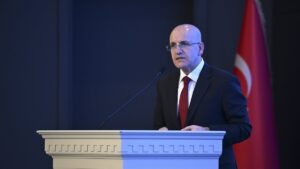








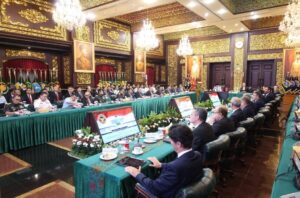


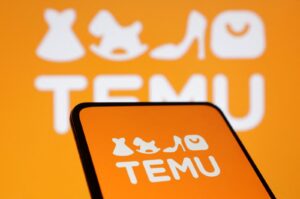



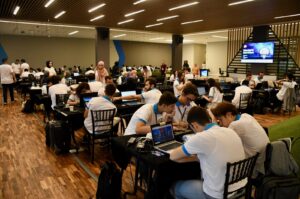



















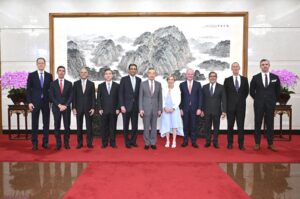
Be First to Comment